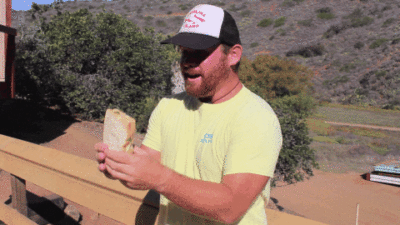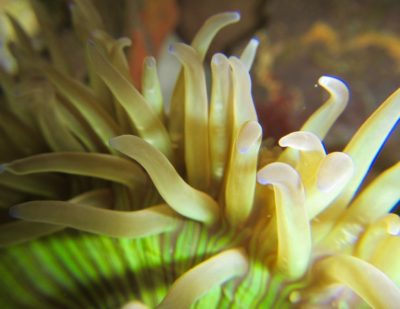

The California Scorpionfish gets its name from its sharp, venomous dorsal spines. It is a member of the family Scopaenidae, which includes some of the most venomous fish species in the world, like the lionfish. The scorpionfish’s spotted body and spiny appearance make it perfectly suited to blending in with the rocks and algae on the bottom of the ocean floor, and during the day they are most commonly found hiding inside rock crevices. At night, they emerge from the rocks to hunt and are voracious predators, skimming along the bottom of the ocean floor in search of crabs, fish, and even octopus!
 Predators of the scorpionfish must face the wrath of the pressurized venom glands found inside its dorsal spines. Oddly enough, the California two-spot octopus, while sometimes preyed upon by scorpionfish, is also one of its biggest predators. The octopus’ soft body protects it from getting injured by the fish’s sharp spines. Other predators of the scorpionfish include sharks and rays. There is also a small commercial fishery for scorpionfish in California, as meat from the fish can be quite tasty if the venom sacks are removed correctly. The venom can produce symptoms similar to a rattlesnake bite in some people, so it is important to be cautious if you catch one while fishing.
Predators of the scorpionfish must face the wrath of the pressurized venom glands found inside its dorsal spines. Oddly enough, the California two-spot octopus, while sometimes preyed upon by scorpionfish, is also one of its biggest predators. The octopus’ soft body protects it from getting injured by the fish’s sharp spines. Other predators of the scorpionfish include sharks and rays. There is also a small commercial fishery for scorpionfish in California, as meat from the fish can be quite tasty if the venom sacks are removed correctly. The venom can produce symptoms similar to a rattlesnake bite in some people, so it is important to be cautious if you catch one while fishing.


Because scorpionfish are so good at camouflage, they will often employ ambush techniques to catch their prey, waiting in rock crevices, then quickly lunging out at the animals that pass by. They open their cavernous jaws and expand their buccal cavity to turn their mouth into a large vacuum cleaner that sucks up prey. Even though scorpionfish do swim more actively at nighttime, it is rare to see them leave the bottom of the seafloor. They lack a swim bladder, which means they are unable to control their buoyancy up and down the water column as most other bony fish can. Instead, their stone-like appearance and sedentary ways make them perfect inhabitants of the intertidal zone’s rocky bottom.


